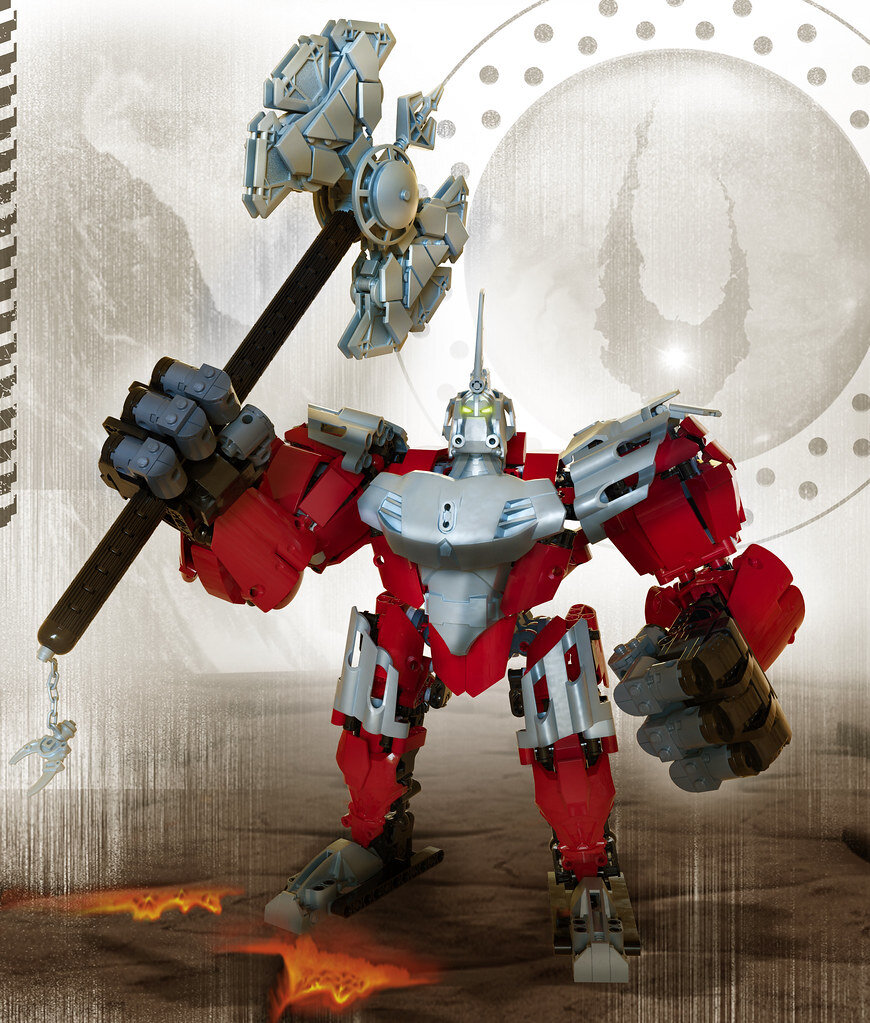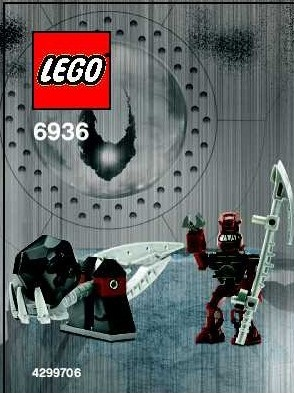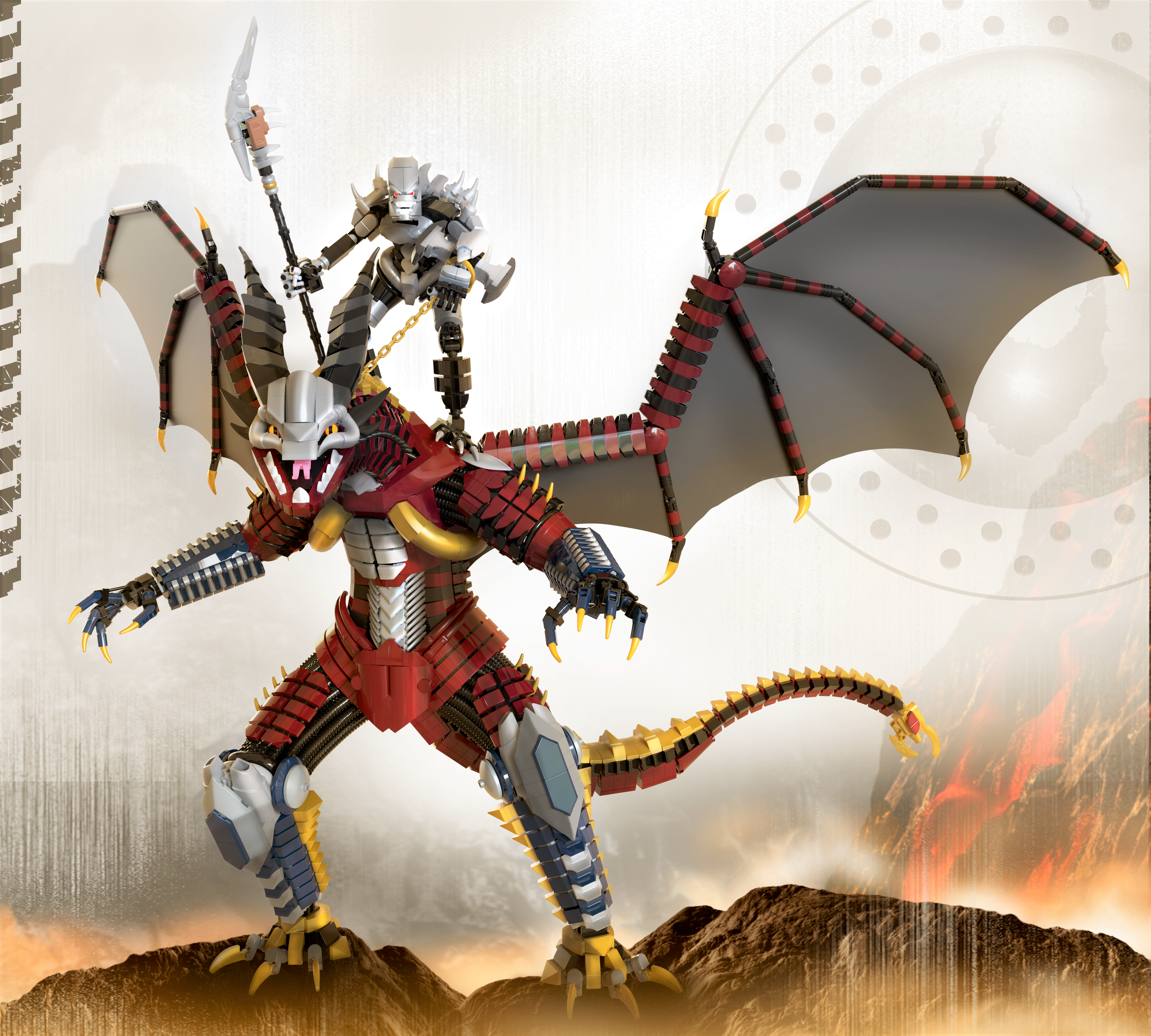Bionicle Reborn on the Island of Doom
/Bionicle made its mark on LEGO’s history as an action figure theme that focused heavily on its unique and memorable characters. As such, it’s no surprise that one of the most common tropes of Bionicle MOCs is to create revamps and reimaginings of the official sets that featured characters. But in the last few years, an international cast of veteran Bionicle fans have been pushing this idea of reimagination to its limit with ambitious collabs. Today, join me in exploring their most recent series, ISLAND OF DOOM.
“Island of Doom” is the nickname for the island of Voya Nui, the setting for Bionicle’s story as told in 2006 where villains kidnapped real-life American rock band The All American Rejects. No, I’m not making this up! In the collab, a whopping 25 builders from all across the globe captured the likeness of 28 different classic Bionicle sets including two polybags and four official combiners (like alt-models if you combine multiple sets). I only have space to highlight a few, but I highly recommend checking out the entire gallery of reimagined characters.
Axonn Anew
Maybe it’s the nostalgic bias for a set I cherished as a kid, but a personal favorite entry of mine is Kevin Huxhold’s (Instagram/Flickr) take on set 8733 Axonn. He has emulated the exaggerated brawny proportions and imposing stature of the iconic ax-wielding titan—but beefed up the model to the extreme and given him an entirely new visual style. The result looks to me like it is straight out of a robot fighting action movie with its exaggerated, tank-like proportions and dramatically color-coordinated armor paneling that make use of large Technic panels new and old.
I reached out to Kevin to learn more about how he designed this model.
Grayson Moses: Where do you live, how did you come to be a Bionicle MOCist, and what led to this collab?
Kevin Huxtable: I’m Chicago born and raised. I grew up on Transformers, Power Rangers and other mech-influenced media that stuck with me stylistically. I also enjoyed the challenge of building figures from LEGO. (It was much harder in the late ‘90s/early ‘00s before Bionicle matured.) I’ve always gravitated towards character and mecha builds as a result.
Revamps are a fun way to reinterpret old sets in a different style, especially without the usual limitations like legal connections and budget. In this case, I thought digital would be the way to go for this MOC because of the essentially limitless palette options for Technic and CCBS (Character and Creature Building System) in the flat silver and dark red that the original Axonn was known for combined with my renewed interest in the medium.
GM: What challenges did you encounter with designing a digital MOC? Can we expect to see more digital MOCs from you in the future?
KH: I’ve used MLCAD and LDD for years on and off, usually for sketching designs. But I recently got into a new workflow of Stud.io for design, then Mecabricks and Blender for rendering. You can really get about as much control over odd connections and obscure parts as you would in real brick with enough patience.
The main challenge I ran into was the lack of tactility and being unsure in some cases of the strength and rigidity of the build. To compensate, I actually built some amount of the frame in real brick to verify its integrity. I hoped this would give the final product some extra weight. It was challenging tuning the lighting in Blender as well. Honestly, that’s something I often struggle with in real life photography as well. I’m definitely interested in learning more about polygonal modeling and rendering in Blender in particular as well as improving my presentation of MOCs through this medium.
GM: Did you have any specific inspirations when building Axonn?
KH: I had some of Derrick Wyatt’s designs in mind while making Axonn. Particularly his work on Transformers Animated. I started with the oversized hands as a defining feature and tried going for more of an exaggerated cartoonish style that still flowed well.
Perking Up Piraka
Kevin isn’t the only builder who went digital for this collab. There are a total of four digital builds and half of those were made by digital MOC master Ivan Martynov (Flickr/Instagram). Ivan is an extremely prolific builder who published nearly a hundred models in 2020—and there is no sacrifice of quality for quantity! While he has demonstrated building proficiency in practically all LEGO themes, he has a clear favorite style that is uniquely alien—with almost too much NPU (Nice Parts Usage) to count. His style breathed new life into one polybag set and one playset which were... originally lacking.
Ivan has reimagined these siege weapons to be creepy, biomechanical contraptions more fitting of Bionicle’s namesake. Take note of the lower set of knees on his Piraka Outpost strider which uses specialty third-party technic axle/towball socket pieces—a combination of connections you cannot find in LEGO’s parts catalog.
I also spoke to Ivan to learn about how he designed his models.
Grayson Moses: Where are you from, and how did you come to be a digital builder?
Ivan Martynov: I live in Solikamsk, a small town located in Perm Krai. Most foreign people I talk to don’t know such a place exists considering that it’s located in the eastern part of European Russia—in fact, even some of my Russian friends have never heard of my town either! I currently study at a university in Perm, 200 kilometers from home. The fact that I live in a student dormitory impacted my hobby as well, being unable to bring my collection with me, so I started building in digital editors sometime around 2017.
GM: What is your attitude towards third party pieces?
IM: I specifically try to seek new molds and recolours that LEGO doesn’t offer. Some can be genuinely fun to use, and incorporating them into builds can be a tricky puzzle since third-party parts sometimes fall outside of LEGO’s various building system standards. I have also made quite a few purist MOCs for the 2019 and 2020 Bio-Cup and Space Jam contests. Probably for some other contests, too—exotic parts are fun, but you often need to play fair.
GM: What inspirations did you draw upon when building your two models?
IM: The creature in the larger model (Piraka Outpost) was inspired by Silt Striders from Morrowind. (I’m glad someone caught onto the reference in the comments on my Flickr post!) I also included a subtle reference to Dali’s The Temptation of St. Anthony since a friend noted that spider legs reminded him of the famous surreal elephants.
Speaking of the turret and the second, smaller model (Piraka and Catapult), I didn’t have any particular reference material but tried to imitate the aesthetic of old real-time strategy video game units. Bionicle playsets depicted various shooters and launchers as generic scenery that would look just as fitting in any other action series like Knights Kingdom or Alpha Team. It was fun to imagine somewhat featureless props as autonomous robots or full-fledged personal vehicles.
Revitalizing Vezon
Often MOCists take inspiration from concept art or lore which further develop the identity of a character—it pushes them in a direction that would have been impossible starting with a standard LEGO set. This concept is exemplified in Andrew Evans’ (Flickr/Instagram) Vezon, the Disaster. Vezon is a character whose mind and body were separated into two distinct beings by the magic of a powerful weapon. While LEGO’s official 8764 Vezon is barely more than your average Bionicle, Andrew has depicted him as a grotesque mutant befitting his origins.
Andrew is a master of styling Bionicle characters in a way that combines the dense and different textures of Bionicle parts—and this MOC is no exception. He uses a variety of LEGO elements to evoke a Frankenstein-like mix of body parts. Check out the teeth, perhaps one of the most defining characteristics of the original set; Andrew has chosen to replace the skull pieces with a jagged assortment of dark tan and gray, including a 12-tooth gear, Viking horn, and minifigure claws.
I chatted with Andrew to ask how he designs his MOCs.
Grayson Moses: Where do you live, and how did you come to make Bionicle MOCs like this?
Andrew Evans: I live in New Zealand, and have been a fan of LEGO and Bionicles for essentially my entire life. I started posting Bionicle creations on MOCpages about 12 years ago where I was greatly inspired by and encouraged by the community. While my interest in this hobby has fluctuated, I’ve always enjoyed improving my skills while learning from and interacting with others—without either, I would’ve probably given up LEGO years ago. Whether I make an original character, revamp, combiner model or something completely different, I try to pump my creations with visual appeal and personality. It’s hard to grab attention and hold it also, and it’s perhaps pointless to expect that from every MOC—yet that may be the goal I’ve set for myself!
GM: What were your inspirations when designing Vezon?
AE: Even though the original model was quite bland in some respects, Vezon had an exceedingly interesting story arc and personality that elevated him to a fan-favourite—meaning I had plenty of ideas to draw inspiration from (which I go more in-depth with on Flickr). This MOC doubled as my Secret Santa for fellow builder Johann Dakitsch, who funnily enough happened to build Vezon’s “brother” Vezok. When I browsed through Johann’s Cursed Wasteland series, which was full of grim-dark, abnormally proportioned figures and creatures, I knew this MOC could benefit from some of that energy!
When I make a Bionicle revamp or tribute, I try to preserve existing features from both the set and lore while introducing new ones that enhance rather than contradict or detract. This certainly isn’t the only way to do it—some in our collab remained faithful to the original sets while others instead deviated into something entirely unique. We’ve realized the tastes of Bionicle fan subsets differ substantially, so perhaps there’s something for everyone!
GM: Do you have any advice for builders who want to use Bionicle textures in MOCs?
AE: My general approach is to build iteratively. I prefer to jump between several projects at once, over several shorter (< 2 hr) sessions. I enjoy taking time to reassess my builds over several weeks and months—even while distant from pieces, the subconscious can do a lot. I find this also minimizes boredom and burnout. I enjoy having videos or a podcast going, and I very rarely feel like I’m wasting time—the end result is worth it.
Regarding Constraction and Bionicle parts specifically, I tend to position first then connect second. Sometimes I’ll want a configuration that requires a little irregular angling, so I make lots of “placeholder” connections (my go-to’s are Exo-Force hands, flick missiles and Technic pin with pin hole). I’m often not bothered to use correct colours—the internals are (usually) simple to revise later once a shape is locked in.
Finally, I’d say it’s important to have a balance of simplicity and detail in a MOC. This ratio will change depending on theme and intent, but it’s very rare for something completely smooth or completely “greebled” to be aesthetically appealing. There’s a lot to be gained by keeping sections simple and clean. The eye tends to be drawn to complexity, so confining limbs to one colour can better spotlight a multi-coloured weapon or head design, for instance. That said, I have a personal preference toward more detail, so long as it has a purpose (or isn’t inserted randomly). I think it’s always worth asking if adding more textures, colours, asymmetry, contrast or features can elevate a good MOC to a great one. I’m hardly an expert on this, sometimes it just comes down to preference.
Exemplary Editing
Last but certainly not least, I want to shine a spotlight on Ari Hytti (Flickr/Instagram) and Nikita Nikolsky (Flickr), who performed the photo editing for the collab. Professional presentation is one of the ways that builders use to set their collabs apart and command attention, and the level of digital artistry on display here is top notch. Take a look at the whole gallery and you’ll see that they didn’t even stop with a stylish standardized background, but made two with a plethora of tailor-made variants! These busy beavers did all this on top of contributing top-notch mocs to the collab. I reached out to Ari to ask how he did it.
Grayson Moses: Where are you from, and how did you get involved with Bionicle?
Ari Hytti: I am currently living in Minnesota (USA) as a permanent resident. I started building with Bionicle in Finland in 2005 when I was only five years old, though by middle school the hobby had come to a halt for me. When COVID hit, I decided to give it a go again, and thanks to the LEGO and Bionicle communities, I was sucked right back into MOCing. BioCup, a building competition, was what really inspired me to get creative with building, from both technical and artistic standpoints. Through the competition, I met some remarkable builders who would later be a part of this collab.
GM: Walk me through your process for your remarkable edits and backgrounds.
AH: Creating an edit takes a lot of time, and there are several steps to take if you want a successful edit. You need to separate the MOC from the background, create an environment with depth (foreground, middle ground, background), match the lighting of the build, and most importantly, you do not want to detract from the main attraction: the build itself. An edit is there strictly to enhance the builder’s MOC—if it’s taking the spotlight, then something is wrong.
GM: How do you set your goals? How much work is it? Is it worth it?
AH: I find it very satisfying to see all of the edits come together—there’s definitely some intrinsic fulfillment in sharing all of your hard work. As far as extrinsic value is concerned, it’s debatable if the effort is worth the many hours. You don’t see all too many comments regarding the edits, (though this is ironically a good thing because it means that the edits aren’t stealing attention from the MOCs). I like to think people are subconsciously appreciating the hard work.
GM: Are any Bionicle sets special to you? And how did this collab get started?
AH: Inika Hewkii was actually one of my first Bionicle sets (a gift on my sixth birthday) so there was inherently some sentimentality and nostalgia tied to that character. I started building Hewkii in hopes of posting him on my 20th birthday back in November, though the build took longer than I had planned. At some point, someone had suggested recreating other Bionicle sets from 2006 to drop as part of a collab. Within a month, the number of committed builders spiraled from 10 to more than 20!
Come to the Island
From concept to recruiting, building to editing, Island of Doom is a collab of revitalization worth your time to go explore. It brought together ambitious LEGO fans from all around the world (even more than I had space to mention here) who shared their passion, talent and artistic skills to showcase the best the Bionicle community has to offer.
What other Bionicle sets would you like to see revamped in a modern style? Leave your thoughts in the comments below.
Do you want to help BrickNerd continue publishing quality articles like this one? Become a patron to show your support, get early access, exclusive swag and more.




























